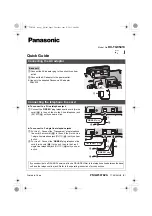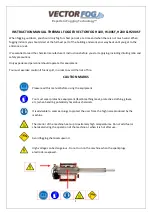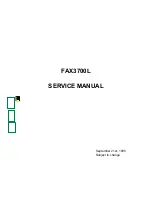
58
Starting Sewing
Insert the fabric under the toe of the foot (It is not
necessary to raise the foot.)
Turn the handwheel gently toward you a couple of
turns and check the thread chain. Then start sewing
slowly. The fabric will automatically be fed.
Guide the fabric in the desired direction.
Finishing Sewing
1. When stitching is completed, continue to run the
machine slowly to produce a thread chain for
about 12 cm (5
˝
) while pulling the thread chain
slightly to the back.
2. Cut the threads with the thread cutter as
illustrated, leaving about 5 cm (2
˝
) thread chain
from the end of the fabric.
Sewing Continuously
Insert the next fabric under the toe of the foot, then
start sewing. It is not necessary to raise the presser
foot for ordinary fabric.
* For heavyweight fabric, raise the presser foot and
insert the fabric in front of the knife.
Then lower the foot and start to sew while guiding
the fabric.
TEST STITCHING
Thread cutter
* For heavyweight fabric, raise the presser foot and
insert the fabric in front of the knife.
Then lower the foot and start to sew while guiding
the fabric.
How to Use Guide Lines
On the top of the looper cover are guide lines
indicating the distance from the needle position.
Please use them as sewing guides.
Mark L indicates the distance from the left needle.
Mark R indicates the distance from the right needle.
The distance between center of guide line and
needle position is 5/8 inch.
1
1
2
1
27
Réglage de la longueur de point
Pour sélectionner la longueur de point, tourner
la
molette
.
Plus le chiffre est élevé, plus la longueur de poin
t
est
élevée aussi
.
La longueur de point peut être réglée de 1 à 5 mm.
La position “ R ” sert aux roul
ot
tés et aux ourlets
étroits.
Molette de réglage
de
la
longueur de point
Marque de réglage
Réglage d
e l
’entraînement
différentiel
Le
réglage de l
’entraînement différentiel peut
être
modifié en tournant
la molette
.
Le chiffre
de la molette
indique le rapport
entre le
mouvement d’entraînement principal
et le
mouvement d’entraînement secondaire.
1.0 indique la position neutre.
Molette
de réglage de l'
’entraînement
différentiel
Marque de réglage
Comment le régler
• Si le tissu cousu est étiré, tourner
la molette
dans
le sens anti-horaire (vers 2.2).
• Si le tissu cousu est froncé, tourner
la molette
dans le sens horaire (vers 0.5).
Étiré
Froncé
* Lorsque
la molette
de
réglage de la
longueur de
point est
réglé
e
entre 1 et 4, le rapport
d’entraînement
différentiel efficace maximal est
de 2.25.
Lorsque
la molette
de réglage
de
la
longueur de
point est
réglé
e
entre 4 et 5, le rapport
d’entraînement
différentiel maximal sera
automatiquement réglé
entre 2.25 et 1.8.
1
2
1
2
1
2
Einstellung der Stichlänge
Z
ur Wahl der Stichlänge drehen Sie das Einstellrad.
Je größer die Zahl,
desto größer ist die Stichlänge
.
Die Stichlänge kann zwischen 1 und 5 mm
eingestellt werden.
Die Position “R” ist für Rollsäume und schmale
Säume gedacht.
Stichlängen-Einstellrad
Einstellmarkierung
Einstellung
des Differential-
Transports
Das
Differential
transport
-Vo
rschubverhältnis
kann durch
Drehen des Einstellrades verändert
werden.
Die Zahl auf dem Einstellrad
kennzeichnet das
Verhältnis zwischen der
Haupt- und der
Nebenvorschubbewegung.
1.0 ist die Neutralposition.
Differential
transport
-E
instellrad
Einstellmarkierung
Einstellvorgang
• Wenn das Nähmaterial auf der Nahtseite gedehnt
wird, drehen Sie das Einstellrad entgegen dem
Uhrzeigersinn (in Richtung 2.2).
• Wenn das Nähmaterial auf der Nahtseite
gekräuselt wird, drehen Sie das Einstellrad im
Uhrzeigersinn (in Richtung 0.5).
Gedehnt
Gekräuselt
*
Wenn das Stichlängen-Einstellrad zwischen 1 und
4 steht, beträgt das maximal wirksame
Differential-Vorschubverhältnis 2.25.
Wenn das Stichlängen-Einstellrad zwischen 4 und 5
eingestellt ist, wird das maximale Differential-
Vorschubverhältnis automatisch zwischen 2.25 und
1.8 eingestellt.
1
2
1
2
1
2
















































